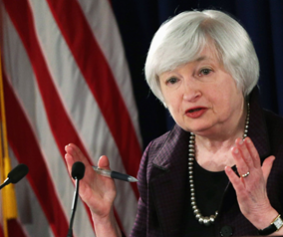Imagine a bank that pays negative interest rates where depositors are actually charged to keep their money in an account. Crazy as it sounds, several of Europe’s central banks have cut key benchmark interest rates below zero and kept them there for more than a year. Now Japan is trying it as well, so said the Bank of Japan (BOJ) in a surprise announcement late last Friday.
Now let’s think about that, since negative interest rates are foreign to most of us. Let’s say you deposit $100,000 with the BOJ which says it will now charge 0.1% a year to hold your money. So at the end of one year, your $100,000 is down to $99,900. You might think that’s not so bad. Really? The European Central Bank (ECB) started out over a year ago charging 0.1% but now charges commercial banks 0.3% to park their money there.
Some short-term government securities in Europe and Japan are charging as much as 0.5%.
By the end of 2015, about a third of the debt issued by euro zone governments had negative yields. That means investors holding to maturity won’t get all their money back. At first, banks in Europe were reluctant to pass on negative rates for fear of losing customers, though several large EU banks have recently started to charge depositors.
The idea is that if commercial banks have to pay to hold their money with their nation’s central bank, which many do around the world, they will be more likely to withdraw that money and make more loans to businesses and consumers. Yet it’s too early to know if it is working or not. Regardless, it is just another punishment to savers.
For some countries, it’s an unconventional gamble that it will stimulate their economies after other options, such as quantitative easing, have failed. Others simply want to push foreigners to move their money somewhere else. Either way, it’s an unorthodox choice that has distorted financial markets and triggered warnings that the strategy could backfire.
The bottom line is that negative interest rates are a sign of desperation, a signal that traditional policy options have failed and new options need to be explored. They punish banks that hoard cash instead of making loans to businesses and other borrowers. Rates below zero have never been used before in an economy as large as the euro zone or Japan, ie – uncharted territory.
Policy makers in both Europe and Japan are trying to prevent a slide into deflation, or a spiral of falling prices that could derail the already feeble economic recovery. The euro zone is also grappling with a shortage of credit and unemployment near its highest level since the currency bloc was formed in 1999.
In theory, interest rates below zero should reduce borrowing costs for companies and households, driving demand for loans. Yet in practice, there’s a risk that the policy might do more harm than good. If banks make more customers pay to hold their money, a lot of cash may go under the mattress instead.
Deutsche Bank economists note that negative rates in Europe haven’t sparked the bank runs or cash hoarding some had feared, in large part because banks haven’t passed them on to their customers. But that is changing, especially now that the ECB rate is -0.3%. This will not end well.
What about negative interest rates in the US? In November 2013 at her confirmation hearings, Fed Chair Janet Yellen warned that near-zero but still positive short-term rates were dangerous because they could disrupt money market funds used by most financial institutions.
Two years later at her congressional testimony in November 2015, she changed her tune:
“I don’t at the moment see a need for negative interest rates. If circumstances were to change, potentially anything, including negative interest rates, would be on the table.”
This, of course, raises the question of whether the Fed will go ahead with its stated plan to raise the Fed Funds rate four times this year, beginning with the March 15-16 FOMC meeting. Given what has happened in the equity markets since the beginning of the year, I expect the Fed to back off until at least June, if not altogether. I’ll keep you posted.
Late Note: Bloomberg reported last Tuesday that the Fed is planning to test banks this year for how they would handle negative rates.



